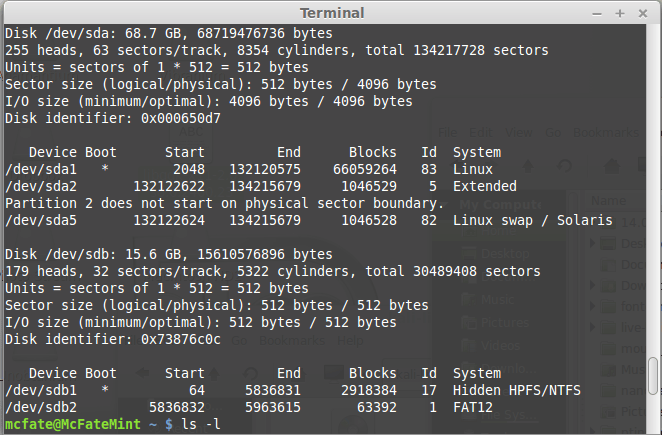

- Kali linux usb or iso how to#
- Kali linux usb or iso install#
- Kali linux usb or iso portable#
- Kali linux usb or iso password#
- Kali linux usb or iso Pc#
In Windows use one of the GUI tools, unetbootin or rufus.In Linux login as root and use the dd command.Visit the Kali Linux official website and go to the download page. The virtual machine image files can be found right on the official website. This is the simplest way to go about installing Kali on Virtualbox.
Kali linux usb or iso install#
Once you’ve downloaded and verified your Kali ISO file, use one of the following commands: Install Kali Linux on VirtualBox Using the VirtualBox Image. Download the Kali ISO of your choice (32/64 bit). It’s way simpler and faster than Windows Make sure you have a 4 GB+ USB drive connected and you’re ready to get it cleaned. Can you run Linux from a USB drive A Linux. If you’re already a Linux user, follow these steps to make a Kali Live USB.
Kali linux usb or iso Pc#
Creating a bootable Kali Linux USB drive is fairly easy. Then click the Create installation media (USB flash drive, DVD, or ISO file) for another PC button and hit Next. Copying the ISO takes time (up to half an hour on some systems) so be patient.

Choose the Kali Linux ISO file to be imaged with select image and verify that the USB drive to be overwritten is the. Be careful with the dd command and double check that you have the correct device dd of/dev/disk6 bs4M. Creating a Bootable Kali USB Drive on Linux (Etcher) Download and run Etcher. To create a bootable USB drive you will need a verified copy of the ISO image of the latest Kali build and a USB drive, a minimum 8GB in size. And now CAREFULLY copy the Kali Linux ISO to the USB drive.
Kali linux usb or iso portable#
Kali linux usb or iso how to#
How to verify the Kali Linux ISO is also explained in the tutorial ‘Installing Kali Linux as a VM’. I have downloaded it here: Verifying the Download I will be using the latest (as of March 2020) Kali Linux 64-bit (Live) version. Using a pre-installed file saves us a lot of time as we don’t have to go through the whole installation process. ova file format which is a pre-installed Kali Linux machine. How to download Kali Linux is explained in the tutorial ‘Installing Kali Linux as a VM’, the first in this series. Then download the Kali Linux ova file mentioned above and extract it using 7-zip or Winrar. Kali offers a bunch of ISOs for download but the one I always do recommend for beginners is the Kali Linux Light ISO.

But frankly speaking, you can use this same procedure to install ANY flavor of Linux on a USB. It is one of a series of tutorials which will help you setup the proper environmentįor using Kali Linux and then show you how to use it’s tools.īy the end of this session you will be able to create: a USB drive running Kali Live Linux a partition for persistence on the USB drive a file system on the new partition and persistent files on the USB drive. The Kali Linux ISO image: If you are going to be making a bootable Kali Linux USB drive, you will need a Kali ISO file to install. Persistence so that you can save files on the drive and then run Kali from the Apply the codes at the bottom one by one.This tutorial will show you how to install Kali Linux on a USB drive, add If necessary, you should change it according to your own. Rufus Rufus is a standalone app designed to format and create a bootable USB drive for a large variety of. We write the following commands via /dev/sdb3. If you remember the capacity of the ext4 formatted partition you created while partitioning, it will be easier to find it from the table displayed on the fdisk -l command.Īt the same time, as there will be a total of three partitions in the USB, it will immediately catch your eye on the table. From here, we need to find the ext4 formatted partition in the USB. So those connected to /dev /sda point are your current hard drive. You will see the discs connected in the text on the screen. Open the terminal and enter the command fdisk -l.
Kali linux usb or iso password#
If it asks for a password at startup, enter the username “ root” and the password “ toor“. Generally, with the f12 key, the Boot settings are entered. Select the option that says “ Live USB Persistence” from the menu that appears. Note: You can find out how the USB Boot settings are done by searching on your computer model. At the opening, you will see Kali’s bootloader.

Creating a Kali Linux ‘Live’ USB Drive Making a Bootable USB Thumb Drive on Windows section of the article Installing Ubuntu Server 20. apply pending operationĪfter the process is done, plug in the USB and boot your computer from the USB. If you need any assistance on creating a Kali Linux bootable USB thumb drive using the custom Kali Linux ISO image, read the following articles. The duration of this process may vary depending on the size.


 0 kommentar(er)
0 kommentar(er)
